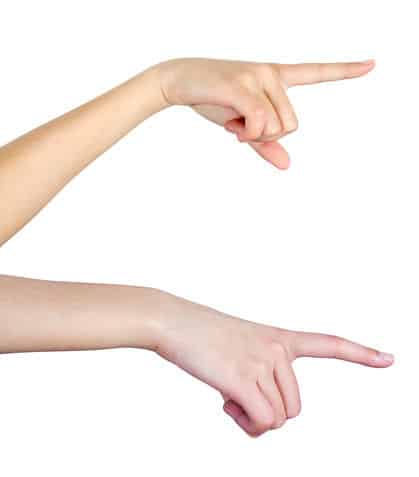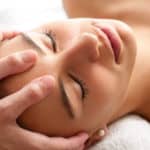

In our western culture there are many unspoken taboos about touch, some stemming from the perception that touch:
- Has sexual repercussions. Don’t touch the opposite gender; don’t touch the same gender; don’t touch yourself.
- May be dangerous with a stranger. Based on a fear of others, attitudes toward unfamiliar persons, cultures or outsiders.
- Will make us sick or somehow affect us in a negative way. Often this is reflective of a negative attitude towards the elderly, sick and/or dying, and so we segregate them from others.
- Is unacceptable between persons of varying statuses. This might include the restriction placed upon those perceived to be in places of power or authority from touching those in lower classes or of lesser power.
Massage therapists come to the profession because of a belief in the power of touch. Though our culture may dictate restrictions, the body itself knows of its value in survival, both psychological and physical. Most bodyworkers and/or psychologists who work with somatic therapies, such as Bioenergetics, Rolfing or Gestalt techniques, recognize this.
Culture and Touch
Several studies done in the 1960s and 1970s showed how vastly different cultural norms are with regard to touching in public. People in several countries were observed in cafes engaging in casual conversation. Americans were found to touch each other only twice in an hour, while in London they did not touch at all. On the other extreme, in Puerto Rico they touched on average 180 times per hour. People of Anglo-Saxon and Germanic origin were found to have the lowest incidence of touching, while those of Latin, Mediterranean and Third World ancestry had the highest. Those of Scandinavian descent fell somewhere in the middle.
What Is Touch and Why Is it Important?
Touch is the first sense to develop in the embryo and is sometimes referred to as the “mother of all senses.” A primitive nervous system, sensitive to touch, develops just three weeks into conception, linking skin cells to a rudimentary brain. Before the fetus can see, smell, hear or speak its nervous system is capable of sensing touch.
In the infant, touch is the first language. It is the basic form of communication between the child and mother as well as the way a child perceives the world. Our sense of touch tells us if a place is safe and warm or cold and hostile. Studies have shown that babies who are held and touched frequently score higher on tests measuring physical, emotional and interpersonal reactions. Those who experience a lack of touch or are abused, score on the low end of the same scale, if they survive at all.
In adults the use of touch can add depth to verbal communication. We often use touch in socially accepted gestures such as hand shaking, patting on the back, a hug or kiss on the cheek in greeting family, friends or business associates.
Touch is used to console in times of grief or to reassure and encourage others. Touch, such as a hand on the shoulder or knee, is often a conversation marker, used to emphasize a point or reinforce a statement. Touch can also be used to restrain others, or in self-defense.
The Body’s Reaction to Touch
Touch, or the lack of it, can have profound effects on both the body and the mind. In the 1920s in the U.S., mothers, at various times, were cautioned against touching their babies too much lest they spoil them. Even today, with a higher awareness of the importance of touch, parents and their children are often separated by work responsibilities. At one time, several generations of families lived together, which would offer more opportunity for healthy, nurturing touch; but now families often live too far away from each other to be able to offer that comforting hug with any regularity.
Research done by the Touch Institute shows that massage triggers various chemical responses within the body, including a decline in stress hormones like cortisol, norepinephrine and epinephrine, and an increase in serotonin and dopamine, all of which help in reducing depression. Massage has also been shown to improve immune function and increase cytotoxic activity, which helps the body fight against pathogens.
Massage Therapy and Touch
Women touch more than men, and men seem to require more space. Women view touch as less sexual than men. Is it then any surprise that more massage therapists are women and that more women seek massage therapy than men?
The appropriate level of touch for anyone, of course, depends on the situation. For massage therapists, touch is the tool used, whether it is Swedish massage, using long sweeping strokes, or Shiatsu with its short, rhythmic finger pressure and stretches. Within the context of treatment, touch is accepted and expected. Outside of the office, in the waiting room, the question of touch becomes more problematic. When your client arrives do you shake hands, do you hug, do you do nothing? When are boundaries crossed?
With someone who has been a client for a long time a hug might be appropriate – indeed it might be more awkward to treat them as formally as a new client with just a handshake. You might hug a client of the same sex, but not the opposite. You might hug an elderly person, but not one younger. There are no hard and fast rules. Most of the time gut instinct will tell you if a hug, handshake, pat on the back – or nothing – is the right thing to do, or if it crosses professional boundaries.
You must take into account that the client may feel differently than you about touch outside the massage session. It may be a cultural difference or it may arise out of an abusive background. Some people, by nature, are very tactile and others have an aversion to touch. You need to be aware of and have some understanding of those differences.
Being able to effectively tune in to the attitudes and levels of acceptance with regard to touch can mean the difference between retaining and losing clients. Finding the right balance of professionalism and comfort will only enhance your practice.
Recommended Study:
Ethics: Therapeutic Relationships
Touch for the Seriously Ill















